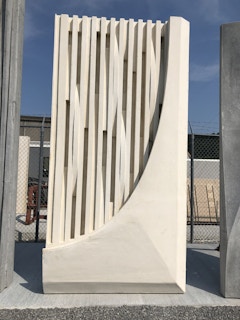
749 results
-
 The Science and Engineering Complex (SEC) on the Allston Campus is the largest new building at Harvard University in recent decades with a footprint…
The Science and Engineering Complex (SEC) on the Allston Campus is the largest new building at Harvard University in recent decades with a footprint… -
Facade Tectonics Institute Recognizes Industry Leaders with the Vitruvian Honors & Awards
- Article by Mic Patterson, PhD LEED AP+, Ambassador of Innovation & Collaboration
In this first 2022 issue of SKINS, we pause to look back on 2021 through our most-read stories of the year, which we’ve recycled here in case you missed them. The very first thing we see is the inaugural Vitruvian Honors & Awards (VH&A) program conducted virtually. It was a spectacular event!
-
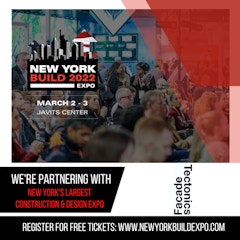
50% of New York Build’s conference program is represented by female speakers, a first-ever for any construction show in the US!
- Press Release
There are also 11 exciting networking events including Women in Construction and Diversity in Construction with entertainment, music, celebrity guests, and more. NY Build is proud to announce that this year’s show will have a 50/50 split of men and women presenters, a first-ever for any U.S show!
-
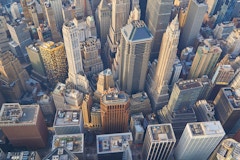
Event Passed
Facade Tectonics Forum: NYC
- New York, United States
The topic of the Forum is Carbon Crisis: Leveraging the Façade System for Carbon Reduction in Buildings
Forum by Facade Tectonics Institute, Inc.
-

Behind the Facade: FTI Voices of Diversity, Equity and Inclusion
- Article by William Green
Like many businesses and institutions, we at FTI have been wrestling with challenges of diversity, equity, and inclusion (DEI), what it means to us, how to realize these important aspirations in the Institute.
-

High Performance: Who Benefits?
- Article by Alexandra Blakeslee, Innovation & Projects
I recently started studying Sustainable Environmental Systems at Pratt Institute. One of my classes focused on climate change and its social effects across the world. I started to connect the dots backward and question the impact of our work in facades and fenestration on our local communities.
-
Tactics to Expand Diversity and Inclusion in the Workforce: Mentoring and Apprentice Programs
- Article by Valerie Block, LEED AP, CDT, Executive Director
I remember taking a career test when I was in middle school. The outcome? I had a supposed interest in becoming a forest ranger. This seemed odd to me--in that I lived in a large metropolitan city and had never been in a forest.
-

Celebrating Diversity in Architecture
- Article by Dahmahlee Lawrence, AIA, NCARB, LEED AP
Prior to the summer of 2020 many people and organizations in the architecture/design industry spent time calling attention to the lack of diversity. While we are aware it affects many industries, I can only write and speak with accuracy to what happens in the industry I work in.
-
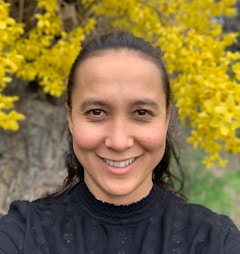
Bridging the Gap Between the Facade Industry and Diversity
- Article by Raditia Lasry, Administrative Assistant & Mindfulness Guide
This newsletter is different from what you usually expect from SKINS. We are talking about human connection, communication, language, and broadening our understanding of how we move through the world and evolve with the new information we receive. How do these aspects relate to the AECO Industry?
-

Diversity and Team Building
- Article by Sanjeev Tankha, AIA, LEED AP, Principal and CEO
How can we be more equitable and inclusive and provide greater opportunities and create an ethos of diversity, equity, and inclusion in the workplace? I offer a few thoughts for consideration.
-

Crucial Conversations of Diversity & Inclusion
- Article by William Green
In architecture, the façade is often the defining aspect of a building’s appearance, establishing the building’s public persona. From an engineering perspective, the façade is an assembly of building components with a critical impact on a range of performative metrics.
-

Kaleidoscope: Bringing the Lens of Embodied Carbon to the Early Design Process - Becca McGee Sturgeon
- Article by Becca McGee Sturgeon
What environmental impact does one object have on the world? This is the question at the core of life cycle assessments (LCA); the embodied carbon lens. ...the current architectural practice rarely provides enough time to explore this type of examination.
-
Cool precast concrete enclosure studies from Washington U. in St. Louis
- Article by Pablo Moyano Fernandez, Assistant Professor
Precast Concrete Enclosures is an elective course taught by Assistant Professor Pablo Moyano Fernandez at Washington University in St. Louis. The primary goal of the course is to enable students to envision and materialize full-scale building envelopes using precast concrete.
-

Event Passed
–NY Build Expo 2022
- New York
The leading and largest construction & design show for New York and the Tri-state area.
Industry Event by New York Build
-
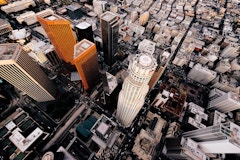
Facade Tectonics 2020 World Congress
- Event by Facade Tectonics Institute
This year's World Congress was presented online through a virtual platform providing a unique forum for a diverse cross section of the design and real estate communities to discuss the innovations and advancements revolutionizing the design and delivery of the building skin.
-

Event Passed
–BuildingNY 2021
- New York City
High Performance Façades: Delivering Better Thermal, Safety, and Acoustical Performance, Presented by the Facade Tectonics Institute
Industry Event by New York Build
-

Addressing climate change through façade design - Vaclav Hasik
- Article by Vaclav Hasik
There is a growing awareness and interest in understanding the carbon footprint of material manufacturing, opening doors to new opportunities in facade design and manufacturing innovation. There are steps and decisions we can make today to help fight climate change.
-

Carbon crisis: The embodied carbon challenge
- Article by Andrew Himes
The focus of this issue of SKINS is on embodied carbon -- the carbon dioxide (CO₂) emissions associated with materials and construction processes throughout the whole lifecycle of a building or infrastructure.
-

Tectonism and Responsible Urban Futures
We at Zaha Hadid Architects Computation and Design group (ZHACODE) explore the relevance of this resource-effective, experience-rich design and construction paradigm to both large institutional projects with complex geometry and mass-customisation, repeated unit projects with assembly complexities.
-
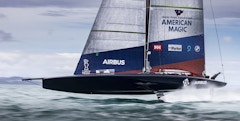
Designing With Composites: The Why, When and How
- Article by Kurt Jordan, Jordan Composites Inc
When we say composites, the reference is Fiber-Reinforced-Polymer composites, FRP. The most common glues or the polymer matrix of FRP is polyester or epoxy-based resins with variations that boggle the mind.

